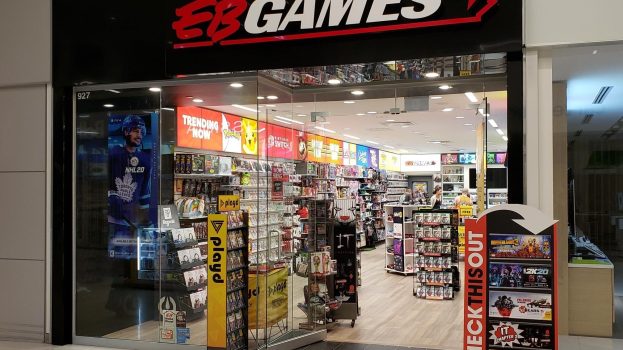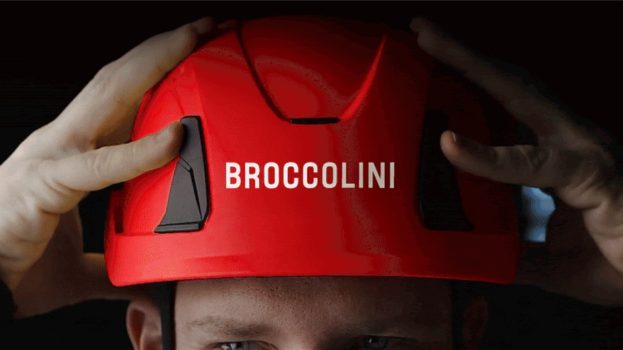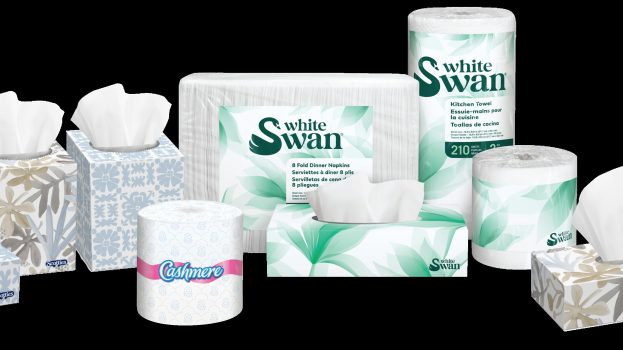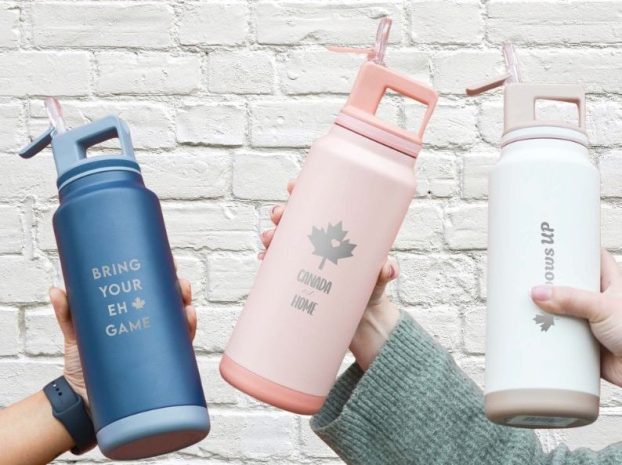On a sweltering summer night Canadians across the country kick back on patios to quench their thirst with a cold one. That used to mean beer, but increasingly it means ‘cooler.’ It started in the late ’80s as a seemingly faddish diversion, but the ready-to-drink (RTD) category gained momentum and legitimization in the mid-’90s, mostly due to the pioneering work of brands like Mike’s Hard Lemonade.
Today, the largest liquor distributor in the country, Ontario’s LCBO, carries nearly 30 different brands of spirit- and malt-based coolers and sold $146 million worth of the stuff in fiscal 2002-2003, a 143% increase since 1997-1998. With brewers and distillers as varied as Bacardi, Labatt and Atlas Wine Merchants in the game, the field is getting increasingly crowded and the summer wars for consumer attention are heating up.
‘The market has just been tremendous over the last number of years,’ says Bob Scott, principal at Toronto-based Ascot Marketing and publisher of the Toronto Beer Buying Monitor. ‘It’s the fastest growing category in the whole food and beverage industry worldwide so I don’t think anybody’s struggling to survive.’
The Ottawa-based Brewers Association of Canada’s figures indicate that total sales for the category reached nearly 750,000 hectolitres in 2002, a 43% increase from just two years prior. Scott also points out that in the U.K., where the market is more advanced (and where coolers are called ‘alcopops’), it was a $2 billion industry in 2002 – up 50% from 2001.
With the category facing such a potentially rosy future, marketers are engaged in a variety of activities to introduce new flavours, build awareness, capture new demographics and increase share.
Bacardi is a big player, marketing Bacardi Silver, Breezer and Rev. ‘We did a major revamp of our Bacardi Breezer packaging and initiated two new flavours, [so] we’re seeing that brand take off substantially this year,’ says Tracy Buckingham, group brand manager for Mississauga-based Bacardi Canada.
In a bid to break out from the pack, Bacardi Silver is going the unusual route of a radio campaign in Toronto, Montreal, Calgary and Vancouver. Created by Toronto agency Flavour, it broke May long weekend and will run throughout the summer. Buckingham says the prohibitive cost of TV coupled with dicey weather made the medium unattractive this summer. ‘We’ve decided to go the radio route so we can sustain the advertising weight a lot longer.’
She adds, ‘[Silver] is going after males who don’t find the taste of beer something they want on an ongoing basis.’ Meanwhile, Rev is geared toward club-goers, while Breezer targets females. However, Buckingham points out that the demo for the latter has changed over the years from a 70/30 female/male split to 60/40.
Going head-to-head against Bacardi’s Rev and Diageo’s Smirnoff Ice are Labatt’s Pur Source and Vbase.
Introduced April 15, cranberry-vodka Vbase (manufactured by Montreal-based Base Concepts) is Labatt’s newest entry and is sold in a 4-pack shaped like a battery pack. The drink also contains Siberian ginseng, echinacea, ginkgo biloba and guarana. ‘The strategy is to keep it in very leading edge clubs, so it’s not available in wide distribution on purpose,’ explains Brian Love, director, innovation at Toronto-based Labatt. Vbase is currently available in only 100 clubs across the country, but can be purchased anywhere at retail.
Vodka and spring water-based Pur Source, which was introduced last year, will be marketed through heavy on-premise sampling and P-O-S advertising that includes ‘animaction’ signs in bars and end-aisle displays, as well as tastings at the LCBO. A TV campaign by Toronto-based Echo Advertising has been airing since May 1. The tone of the spots is described by Echo as ‘urban sophistication’ with one execution running in 250 Paramount theatres across Ontario. Both the TV and theatre spots prominently feature women. Pur Source and its Light Source extension were introduced to compete with Smirnoff Ice, and Love says Labatt is playing up Pur Source’s calorie-lite advantage and directly comparing it to Smirnoff in the ads.
‘We recognize people are choosing it because it has 146 calories, versus a product like Smirnoff Ice that has over 275 calories per bottle. And there are very few consumers that realize that Smirnoff Ice has so many calories.’
One of the smallest firms in the market is Grimsby, Ont.-based Kittling Ridge, which manufactures and markets two flavours of its Loaded brand cooler.
Tim Burrows, VP of sales, says the company’s sole goal this year was to introduce its orange fruit flavour to the market. ‘The product has to speak for itself,’ says Burrows. ‘We focus very solidly on brand distribution. We use [the restaurant] venue as a trial. People taste it in a bar for the first time and like it and hopefully come back to the retail side to purchase.’
This summer Kittling Ridge, which does no formal advertising and has no agency, will rely on in-store LTOs (limited-time-offers) and partial sponsorships of events and festivals, of which 25-30 are planned. These include Sunsplash at Port Colborne and the Elvis Festival in Collingwood, both in Ontario.
Not all the smaller players are locked out of high-cost advertising. Mississauga-based Atlas Wine Merchants, which markets four cooler brands (Vex, Grower’s Cider, Tabu and Canada Cooler), launched a month-long national brand awareness campaign in June called ‘Banned In’ for the two-year-old Tabu. The TV spots by Toronto-based Gee, Jeffery & Partners featured a fictitious reporter traveling to small towns across the country to find out why the sized beverage was getting banned.
Chris Pfeifer, marketing manager for Atlas, says the ability to launch appealing new flavours is key to success: ‘One that is a runaway success for us this season is Vex hard kiwi mango lemonade. It’s on fire because of the flavour. You can show them all kinds of packaging and do all kinds of advertising but the liquid has to live up to the expectation and if it doesn’t taste good they’re not so likely to return.’ According to the LCBO, Vex is its fourth best-selling brand, and Pfeifer says it’s doing equally well nationally.
With its ‘limonade’ extension for Mike’s Hard Lemonade, Vancouver-based Mark Anthony Group is also tweaking taste. According to Rick Fiamelli, VP of marketing, the company did research that told them consumers were looking for something ‘less sweet, less filling, more drinkable.’
An outdoor campaign ran during May and June in support of Mike’s Hard Limonade. Mike’s is also returning to TV in Canada for the first time in several years, says Fiamelli. Two spots are currently airing nationally and will run into August. Fiamelli describes the ads as being about ‘summer, heat and refreshment.’
Previously the No. 1 brand in Canada and responsible for helping to build the whole category, Mike’s is now the No. 3 seller at the LCBO, behind Ice and the U.K. import Woody’s. ‘We are in the process of building back our business,’ says Fiamelli.
Below, three creatives and marketers weigh in on how to keep coolers hot.
Eric Meerkamper, partner, D-Code, Toronto
Before, just having a new product got talked about. But now, just launching the product doesn’t give you as much of a buzz. So definitely you have to have something that’s impactful in terms of your advertising if you want to fight in that space.
But what I see happening is that the category is going to mature so there’s probably a space for an import cooler, a discount cooler, a local microbrew kind of cooler. I see it segmenting increasingly. A smaller, local person can say, ‘I’m not going to try and fight Smirnoff. I’m going to come out with the maple cooler and create new space and opportunity.’
There are greater opportunities, instead of going after the club segment, to try and find other areas within the broader category. A couple people are doing it very well. Pur Source would be one, which seems to have carved out a nice piece of the market by going after the health conscious female, especially with their lite version. There would probably be room for others in that space as well.
Bob Scott, principal, Ascot Marketing, Toronto
It’s a product that has just hit the right chord with drinkers who are looking for perhaps higher alcohol than beer but with less liquid and something in a ready-to-drink format, unlike spirits or wine. And it’s had great appeal to the youth market and particular appeal to young women.
I think it’s going to be very much like the microbreweries in the beer business. But the cooler market is very, very vibrant and even though companies might be losing share, with the explosive growth of the market they can still increase their volume.
That won’t last forever but I think we’re a long way from a shakeout in this segment. There are a lot of niche brands that don’t necessarily have the budgets of the big boys but find a smart way to position their products.
[Smirnoff] Ice has been a tremendous success obviously but Mike’s has also been a tremendous success from day one and I wouldn’t count them out at this stage.
Rob Tarry, senior copywriter, Rethink Advertising, Vancouver
I think Smirnoff in general [has the best creative] – they just seem to back up the cool truck and dump it into their ads.
Every frame is dripping with carefully-studied and very well-executed, cool scenarios and cool people and fabulously good-looking sets.
So far, it hasn’t gone so overboard that it’s annoying.
One of the unspoken truths is that coolers are sort of an easy, sweet way to get really plastered. So in terms of taste, from one to the other, they’re all sort of these syrupy, sickeningly sweet drinks that are one step above high school punch bowls.
They don’t seem to focus on product attributes.
It would be interesting to see someone actually try to talk about product attributes.
For example, they could position themselves as ‘this one isn’t for kids’ or ‘this one has some dry characteristics’ rather than the syrup.























